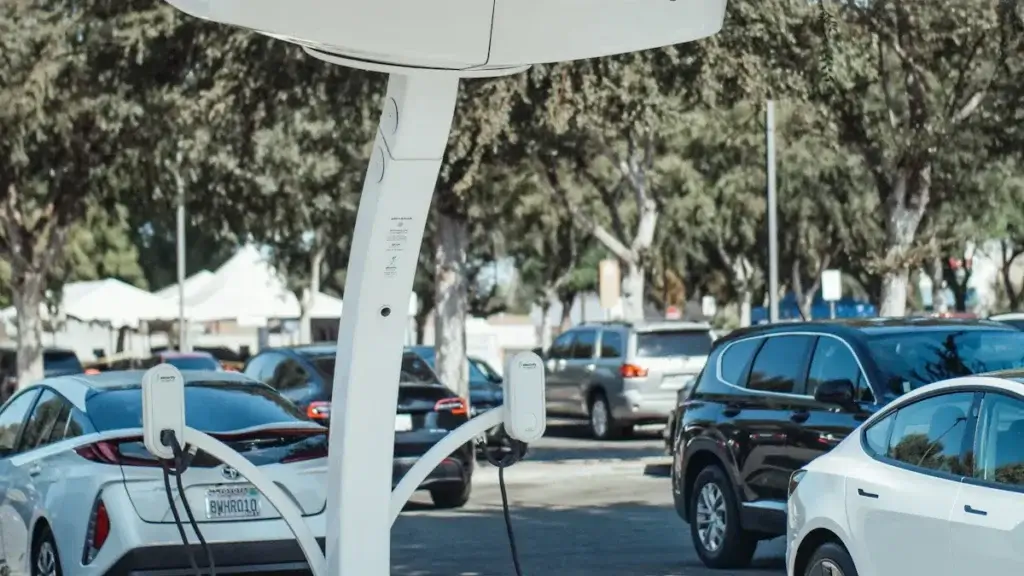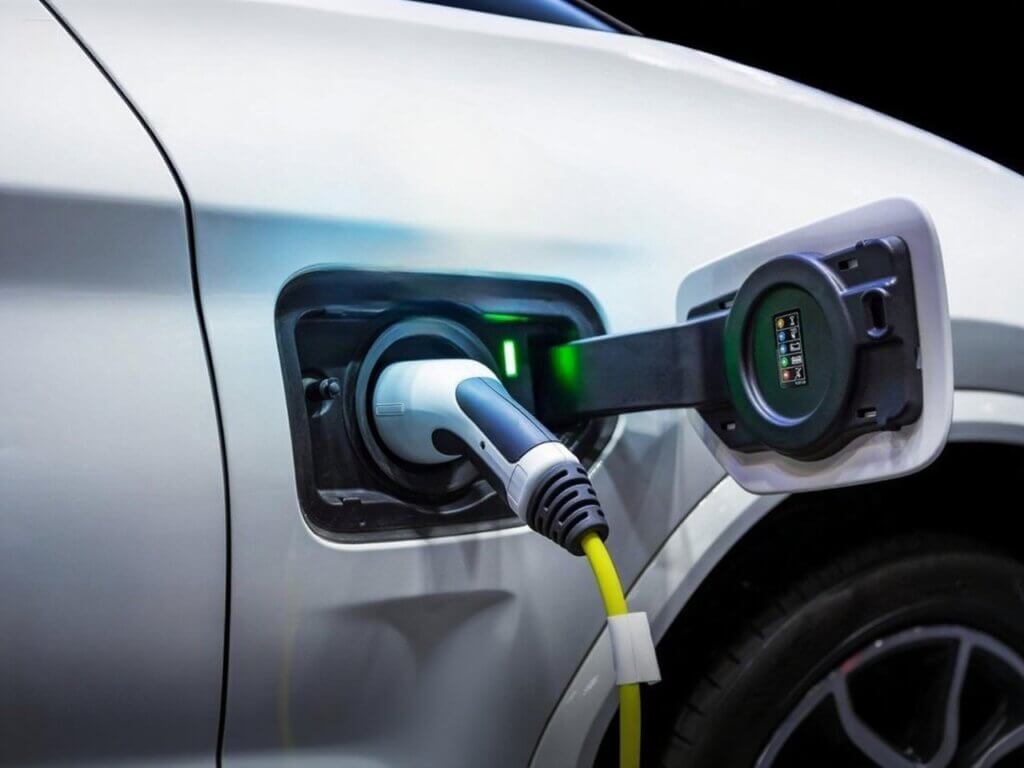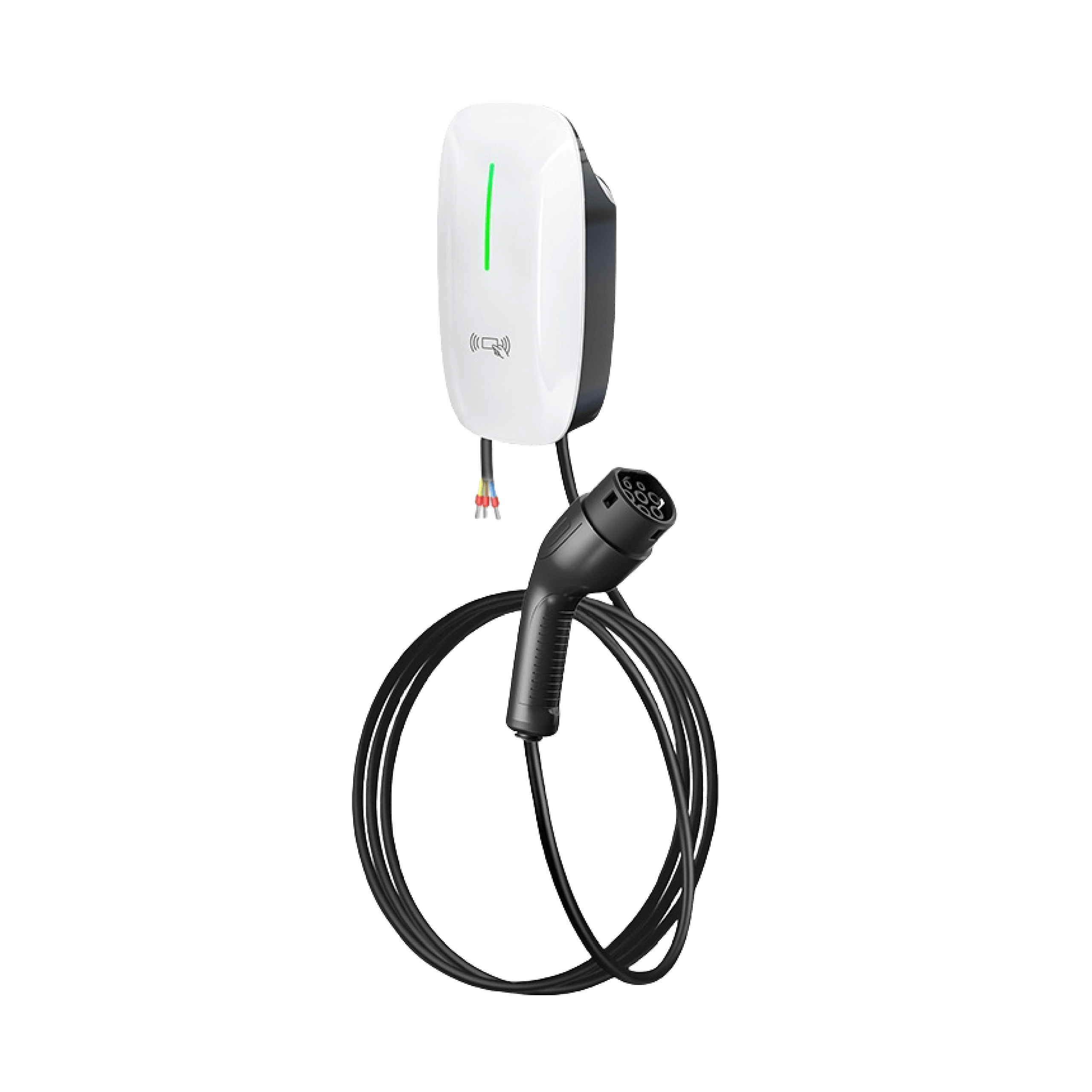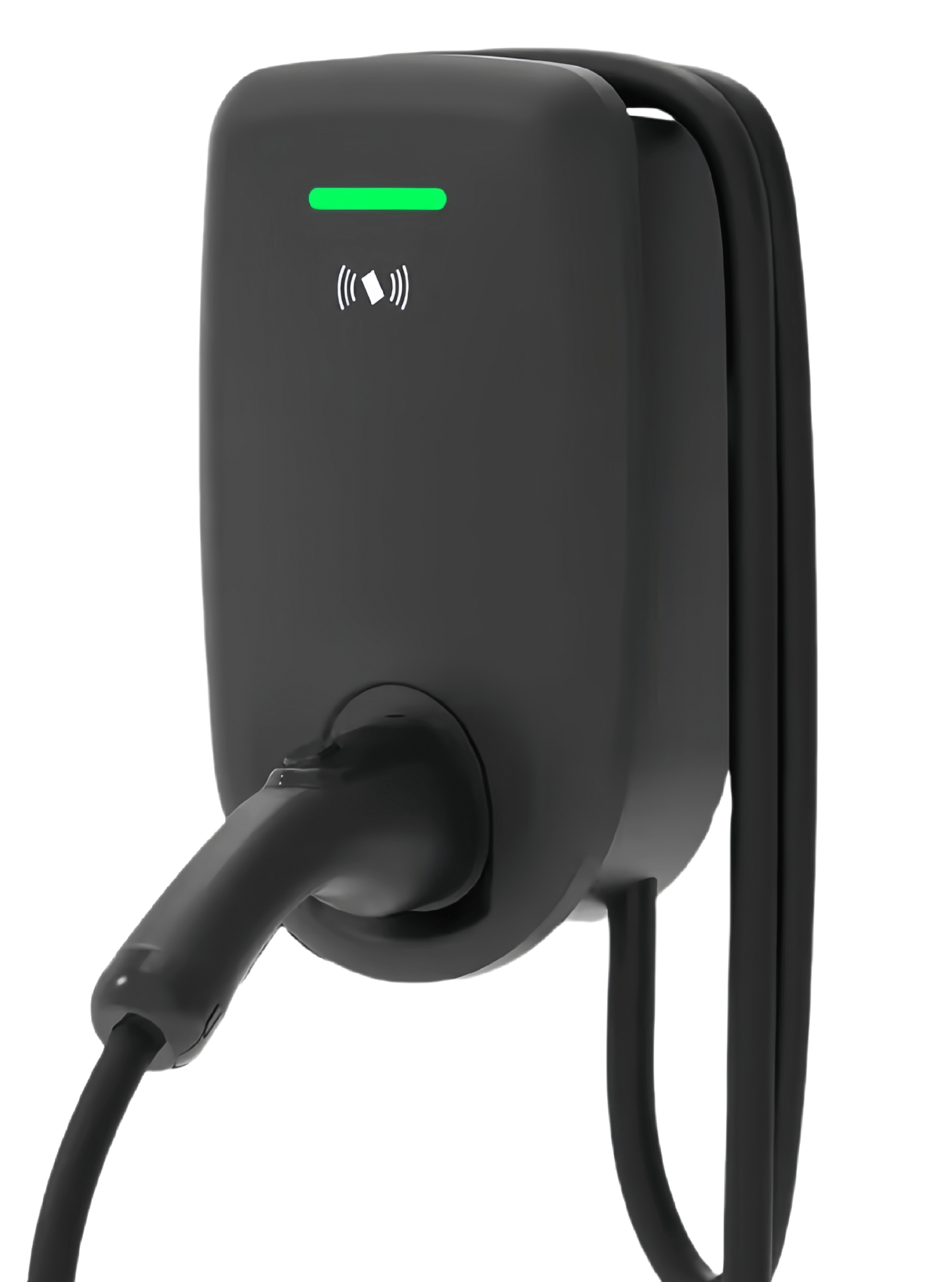Commercial EV charging station installation begins with a good plan. They build the needed infrastructure and look at choices and prices. They pick the best electric vehicle supply equipment. Many businesses want commercial EV charging stations to bring in and keep tenants. A step-by-step process helps them put in and turn on the EV charging station. They pick commercial EV charging station models, set up electric charging stations, and turn on each one. For premium properties or to align with specific brand partnerships, some installers may opt for dedicated solutions like a BMW charging station to cater to a high-end clientele.
I. Key Takeaways
- Begin with a good plan for putting in EV charging stations. This helps stop problems and makes things go well.
- Do a careful check of the site to see if it is easy to reach. Look at the parking spots and the electrical setup. This step is very important for a good installation.
- Pick the best EV charging station model for your needs. Think about how much power it gives and what smart features it has. Think about what your customers want for the best results.
- Choose the right way for people to pay at your charging stations. Pick between networked or standalone systems. Base your choice on your business size and who your customers are.
- Make plans for more stations in the future. Leave space for more and make sure your electrical system can handle upgrades.
- Follow local rules and get all needed permits before you start. This helps you stay out of trouble and follow the law.
- Set up a regular maintenance plan that includes cleaning and checking the stations. This keeps them working well and makes users happy.
- Use technical support and get software updates to keep things running well. Updates help keep stations safe and add new features.

II. Site Assessment
A good site check helps the commercial EV charging station project work well. Businesses must look at everything before starting. This step stops problems and keeps things easy. The check makes sure the spot is good for drivers and owners. It also looks at the current ev infrastructure and what needs fixing.
Location Review
Accessibility
Easy access is important for commercial ev charging stations. Drivers want to find and use stations easily. The check sees if cars can get in and out safely. Wide driveways and clear paths help a lot. The check also looks at how close stations are to doors or roads. If stations are far away, drivers may not use them. Good lights and signs help people see stations at night.
Parking Layout
The parking layout helps electric vehicle charging stations work well. The check looks at how many spaces there are. It also checks if spaces fit all car sizes. Some places have small parking lots. The check sees if cars can park and charge without blocking others. It also thinks about adding more stations later. Planning now saves time and money later.
Electrical Infrastructure
Capacity Check
Each commercial ev charging station needs enough power. The check looks at the building’s electrical system. It checks if the system can handle new charging stations. If power is not enough, upgrades may be needed. This step stops outages and keeps stations working.
Upgrade Needs
Sometimes, the current ev infrastructure cannot support new stations. The check shows what upgrades are needed. This might mean new wires, panels, or transformers. The check also looks at how upgrades affect daily business. Planning ahead helps stop delays and keeps things moving.
Tip: A good site check saves time and money. It helps businesses find problems early and plan for what’s next.

III. Station Selection
Picking the right commercial EV charging stations is important. The best station lets drivers charge fast and keeps things running well. Many owners want to know how to choose the right one. This part explains the main things to think about. This guide will cover the key decision factors: How to Choose the Right Commercial Charging Station Solution.
Model Choice
There are many models of commercial EV charging stations. Each one has different features. Owners should pick what works best for their place and customers.
Power Output
Power output changes how fast cars get charged. Some stations charge up cars quickly. Others take longer but cost less money. Owners should ask, “How much power do my customers need?” Fast charging is good for busy spots. Slow charging is fine where cars stay parked a long time. Here is a table to compare choices:
| Power Output | Best For | Charging Speed |
|---|---|---|
| High | Busy locations | Fast |
| Medium | Offices, hotels | Moderate |
| Low | Long-term parking | Slow |
Tip: Owners should check their electrical system before picking a power level.
Smart Features
Smart features help owners manage commercial EV charging stations better. Many stations let owners monitor usage, get reports, and see alerts. These tools help owners spot problems early. Some stations link to apps, so drivers can find and pay easily. Owners should pick features that save time and make things simple.
Payment Systems
Payment systems are important for commercial EV charging stations. Owners must choose how drivers will pay to charge.
Networked Stations
Networked stations link to a main system. Owners can handle payments, monitor usage, and set prices. These stations take credit cards and mobile pay. They work well for big places or many locations. Owners can see all the action on one screen.
Standalone Stations
Standalone stations do not need a network. Drivers pay at the station in simple ways. These are good for small businesses or places with few users. Owners like them because they cost less and are easy to set up. Standalone stations have basic payment and are easy to care for.
Note: Owners should pick a payment system that fits their business and customers.

IV. Installation Planning
Owners use this guide to make sure their electric car charging station works well and stays dependable. A solid plan paves the way for a successful launch and deployment of an EV charging station project. Careful planning makes things easier and stops problems. This step is about where to put stations and who should help.
Location Setup
Visibility
Drivers should easily identify the commercial ev charging stations once they pull up to the facility. Good visibility brings more people and helps them find stations easily. Many businesses put stations near main doors or busy driveways. Bright signs and clear marks help drivers see stations any time. Some owners add lights to make the area safer and easier to find at night.
Tip: Put stations where drivers already look for parking. This saves time and keeps cars moving.
Expansion
Business needs can change quickly. Planning for growth saves money and work later. Owners often leave space for more stations or extra wires. This way, they can add new spots without digging up the lot again. Some places use flexible layouts so they can grow as more drivers use electric vehicles.
A simple checklist for expansion planning:
- Leave extra space near stations
- Use wires that support more chargers
- Plan for more parking spots if needed
- Check if power can handle more stations
Partner Selection
Certified Contractors
Picking the right contractor is important. Certified contractors know the rules and best ways to install commercial EV charging stations. They handle permits, wiring, and safety checks. Many businesses ask for proof of training or past work before hiring. A good contractor keeps the project moving and stops costly mistakes.
Supplier Support
Strong supplier support helps a lot. Suppliers help with setup, training, and fixing problems. They answer questions and give updates when needed. Some suppliers offer guides or even help on-site during installation. Good support means less downtime and faster fixes.
Note: Good partners help businesses avoid delays and keep stations working well.
V. Compliance and Permits
Commercial EV charging station projects make commercial properties worth more and help save money. Every commercial EV charging station project must follow rules. Owners need the right permits before starting work. These steps help businesses avoid trouble and keep things safe. They also make sure stations work well for everyone.
Local Regulations
Each city or town has its own rules for EV charging stations. Owners should check these rules before doing anything. Some places have many rules, while others have fewer. It is smart to learn what local leaders want first.
Zoning
Zoning rules say where a charging station can go. Some places let stations go in parking lots. Others do not allow this. Owners should ask city workers about zoning before picking a spot. If commercial EV charging stations are not allowed, owners may need a special permit. Checking zoning rules early helps avoid moving stations later.
Tip: Talk to the local zoning office as soon as you can. This saves time and stops problems.
Permitting
Permits let owners build and use EV charging stations. Owners must fill out forms and pay some fees. Some cities want drawings or plans. Others want proof that stations are safe. Getting permits can take a long time, so start early. A certified contractor can help with forms and checks.
ADA Compliance
Charging stations must be easy for everyone to use. The Americans with Disabilities Act (ADA) has rules for this. Owners must follow these rules to avoid fines and help all drivers.
Accessible Spaces
Accessible spaces help people with disabilities use charging stations. Owners must put parking spots close to the station. These spots need extra space for ramps or lifts. The ground should be flat and easy to move on. Accessible spaces show that a business cares about everyone.
Signage
Signs help drivers find charging stations and accessible spaces. ADA rules say signs must be easy to read and at the right height. Owners should use clear words and symbols. Good signs help drivers know where to park and charge. They also show that the business follows the law.
Note: Following ADA rules is not just about fines. It helps every driver feel welcome.
A simple checklist for compliance:
-
Check local zoning rules
-
Apply for permits early
-
Set up accessible parking spots
-
Use clear, ADA-approved signs
Businesses that follow these steps build trust. They also keep their commercial EV charging stations working well.
VI. Charging Station Installation

Charging station installation needs good planning. Each step is important for safety. Businesses want charging to work well every time. This part explains the main steps, from getting ready to turning on the station. This guide will cover the key points: Building the Fundamentals of a Commercial Charging Station.
Site Preparation
Site preparation helps the charging station get built right. Teams look at the area and get ready to build. They check if the ground and power can handle new stations.
Excavation
Excavation is the first step. Workers dig where the station will go. They remove old pavement or dirt. This makes room for cables and the station base.
Teams check for pipes or wires underground to be prudent. A solid foundation ensures longevity of the charging stations after installation.
Tip: Teams should mark the spot before digging. This helps everyone know where to work and keeps things safe.
Electrical Upgrades
After digging, teams check the power supply. Most commercial EV charging stations need more electricity. Electricians look at the building’s system. They add new wires or panels if needed. Sometimes, they put in transformers to give more power. Upgrades help stations work without problems. Teams test everything to make sure it works well.
A simple checklist for electrical upgrades:
-
Check the power supply
-
Add wires or panels
-
Install transformers if needed
-
Test the system for charging
Equipment Setup
When the site is ready, teams set up equipment. This step brings the charging station to life. Workers follow plans to put up and wire each station.
Mounting
Mounting means putting the station in place. Teams use bolts or brackets to hold it steady. They make sure the station stands straight and does not shake. Some stations go on walls, others stand alone. Workers check the height and spot so drivers can reach the cable. Good mounting keeps the station safe and easy to use.
Safety Alert: Teams should wear gloves and helmets when mounting. This keeps everyone safe from falling tools or sharp edges.
Wiring
Wiring connects the station to power. Electricians run cables from the station to the main panel. They use thick wires for high charging loads. Teams check each connection for safety. They do not want loose wires or sparks. After wiring, they test the station to make sure it works. Good wiring keeps charging safe and reliable.
Commissioning
Commissioning is the last step of installation. Teams make sure everything works before drivers use the station. This step includes safety checks and software setup.
Safety Checks
Safety checks keep people and property safe. Teams look at every part of the station. They test cables, bolts, and covers. Electricians check for leaks or sparks. Workers use tools to measure power flow. They make sure the station does not get too hot. Teams also check emergency shut-off switches. Good safety checks help stop accidents and keep stations working well.
Note: Regular safety checks after installation help find problems early.
Software Setup
Software setup helps owners manage charging stations. Teams install programs to track charging sessions. They set up payment systems and alerts. Some stations connect to networks for remote checks. Owners can see how much energy each station uses. Software helps find issues and plan repairs. Teams test the software to make sure it works with the hardware. Good software setup makes charging easy for drivers and owners.
A simple list for software setup:
-
Install management software
-
Set up payment options
-
Connect to network if needed
-
Test alerts and reports
Charging station installation ends with a final check. Inspectors look at permits and check every part of the station. They want to see that the installation follows local rules and safety codes. After passing inspection, the station is ready for drivers to charge their cars.
Tip: Businesses should keep records of every step. This helps with future upgrades and keeps the station safe.
VII. Maintenance
Regular maintenance helps charging stations work well. Many owners know a good plan stops big repairs. It also keeps stations working every day. A strong routine makes drivers feel safe and happy. This part shows the main steps for taking care of stations, Including best practices of cleaning the stations and updating the software.
Routine Tasks
Routine maintenance is very important for charging stations. These easy jobs help find problems early. They keep stations working their best.
Cleaning
Clean stations look nice and work better. Dirt and dust can block screens or ports. Teams should clean the station every week. They use a soft cloth and gentle cleaner. Teams check for gum, stickers, or trash nearby. A clean area makes drivers feel welcome and keeps equipment safe.
Tip: Clean stations bring more drivers and show quality.
Inspection
Regular inspection finds small problems before they get worse. Teams look at cables, plugs, and screens. They check for cracks, loose wires, or broken parts. If they see damage, they fix it right away. Teams also test charging to make sure it works. Inspections help keep stations safe for everyone.
A simple inspection checklist:
-
Look for damage on cables and plugs
-
Check screens for cracks or errors
-
Test charging with a vehicle
-
Make sure lights and signs work
-
Report any problems
Technical Support
Even with cleaning and checks, problems can happen. Technical support helps businesses feel calm. Quick turn around increases uptime of stations and satisfaction of driver customers.
Maintenance Packages
Many companies pick maintenance packages for their stations. Packages include regular visits, repairs, and emergency help. A plan saves money over time. It helps businesses plan their spending. With a package, teams know when service will happen and what it costs. This prolongs charging station’s life cycle use.
Note: A maintenance plan stops surprise costs and keeps stations ready.
Troubleshooting
Sometimes, a station stops working. Troubleshooting finds the problem fast. Teams check error codes or call support. Many problems come from loose cables or software bugs. Quick fixes get the station working again. Support and repair team are essential should problems are encountered. Fast turnaround helps maintain high level of charging station’s upkeep time.
A troubleshooting flow:
-
Check the power supply.
-
Look for error messages.
-
Reset the station if needed.
-
Call support if the problem continues.
Software Updates
Modern stations use smart software. Keeping software updated is important for safety and performance. Updates add new features and fix bugs.
Remote Monitoring
Remote monitoring lets teams watch stations from anywhere. They can see if a station is busy or needs help. Remote tools send alerts when something is wrong. This helps teams act fast and keep charging ready. Many businesses use remote monitoring to track energy use and see charging trends.
Callout: Remote monitoring saves time and helps teams fix problems early.
Firmware Upgrades
Firmware upgrades help stations work better. Upgrades fix bugs, boost security, and add new options. Teams should check for firmware upgrade opportunities annually. Upgrading firmware enables charging stations to be equipped with the latest set of technologies and potential.
A simple firmware upgrade process:
-
Check for new firmware from the supplier.
-
Schedule the upgrade during low-traffic hours.
-
Upgrade firmware per required instructions.
-
Test the station after the upgrade.
Safety Alert: Always back up settings before upgrading firmware. This helps restore the station if something goes wrong.
Regular maintenance, technical support, and software updates keep charging stations working well. A good plan protects the investment and keeps drivers coming back. Businesses that care for stations have fewer problems and happier customers.
VIII. Conclusion
Following this guide equips businesses for enduring success. Strategic planning safeguards station safety and reliability. Routine maintenance ensures peak performanceand uptime. Owners should assess sites regularly or seek expert advice. Incentives and support programs ease upkeep costs, fostering proactive care. This investment future-proofs properties, drawing more EV drivers and boosting traffic.


